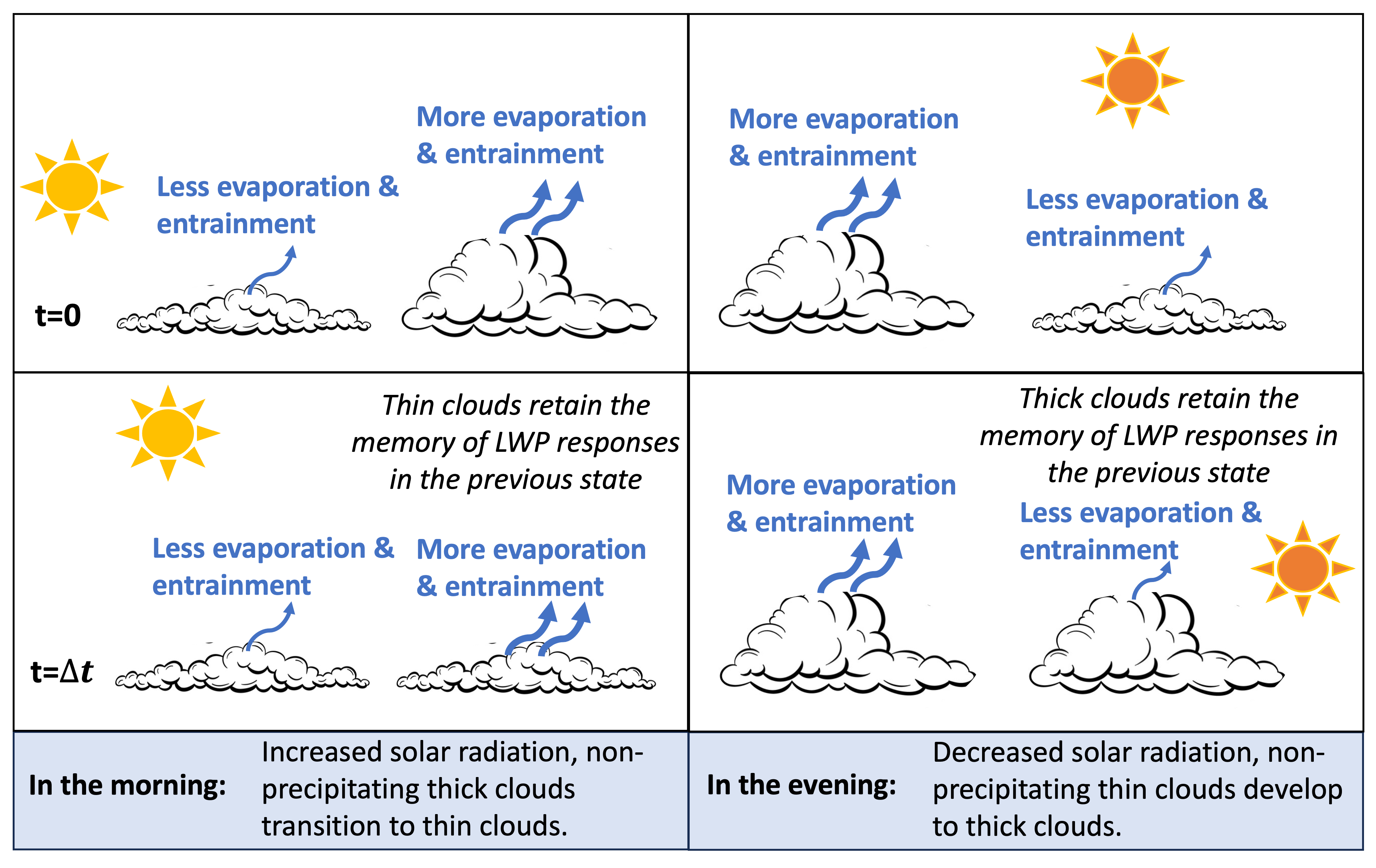Diurnal cycle of aerosol indirect effect for warm boundary-layer clouds explained by cloud memory
Submitter
Zheng, Xue — Lawrence Livermore National Laboratory
Area of research
Cloud-Aerosol-Precipitation Interactions
Journal Reference
Science
Warm boundary-layer clouds in the Eastern North Atlantic (ENA) region exhibit notable diurnal variations in cloud properties. However, the diurnal cycle of the aerosol indirect effect (AIE) for these clouds remains poorly understood. This study reveals a “U-shaped” daytime variation of AIE with clouds more susceptible to perturbations in the cloud droplet number concentration at noon, and less susceptible in the morning and evening. The daytime variation of cloud susceptibility is attributed to the diurnal transition of cloud state while retaining the memory of cloud responses from the previous state.
Impact
For the first time in the ENA region, the daytime variation of AIE for cloud liquid water path (LWP), cloud albedo, and cloud fraction was quantified using observations. The “U-shaped” daytime variation in AIE implies that cloud susceptibilities estimated from polar-orbiting satellites with overpass time at noon may underestimate the daytime mean value of cloud susceptibility as they observe the daily minima in this region. The dependence of cloud susceptibilities on cloud state and cloud memory underscores the importance of classifying cloud state while tracking its temporal evolution in future AIE studies.
Summary
This study quantified the daytime variation of AIE using the pixel-level cloud retrievals from the geostationary satellite, which is specifically tailored to support the ARM user facility over the ENA observation site. The satellite-retrieved cloud properties and precipitation conditions were validated using ARM ground-based observations and ARM's ENA site in the Azores. The magnitude and sign of cloud susceptibilities heavily depend on cloud state defined by LWP and precipitation conditions. Non-precipitating thin clouds account for 44% of all warm boundary-layer clouds in July and they contribute the most to the observed daytime variation. Non-precipitating thick clouds are the least frequent cloud state; they exhibit more negative LWP and albedo susceptibilities than thin clouds. Precipitating clouds are the dominant cloud state, but their cloud susceptibilities show minimal variation throughout the day. By tracking the historical cloud state, we find evidence that the daytime variation of LWP and albedo susceptibilities for non-precipitating clouds are influenced by a combination of the diurnal transition between non-precipitating thick and thin clouds and cloud retaining the memory of responses to perturbations in cloud droplet number concentration.



